Rendering 3D animations on early PCs from the 90s
Twenty years ago, in October 2001, I uploaded Space Battle, a nine-minute long animated short movie that was the culmination of my “3D years”, using 3D Studio for MS-DOS then 3D Studio Max on Windows.
I will present my productions in reverse order, from the newest to the oldest, and will write about the context, the machines and the software I relied on.
Space Battle – 1998-2001
Video
Context
Space Battle is my second attempt at depicting warfare in space. Yes, at the time I was much uninspired concerning the titles of my movies. As a big fan of Star Wars, this subject was a natural. Plus it did not require that I animate characters. Indeed, time inverse kinematics was very new at the time, and there was no easy way to move the vertex forming a body in a convincing manner.
Early tests were done in 1997 on a Windows NT4 machine, in order to see if I could adapt to the brand new 3D Studio Max 1.5. This software was far superior to the classic MS-DOS 3D Studio that I was used to, but the user interface and philosophy was very different. In 3D Studio R4 you had separated perspectives to work on the 2D stuff, to do extrusion and to place object on the scene.3DS Max unified all the tools in one single workspace. It took time for me to get used to it.
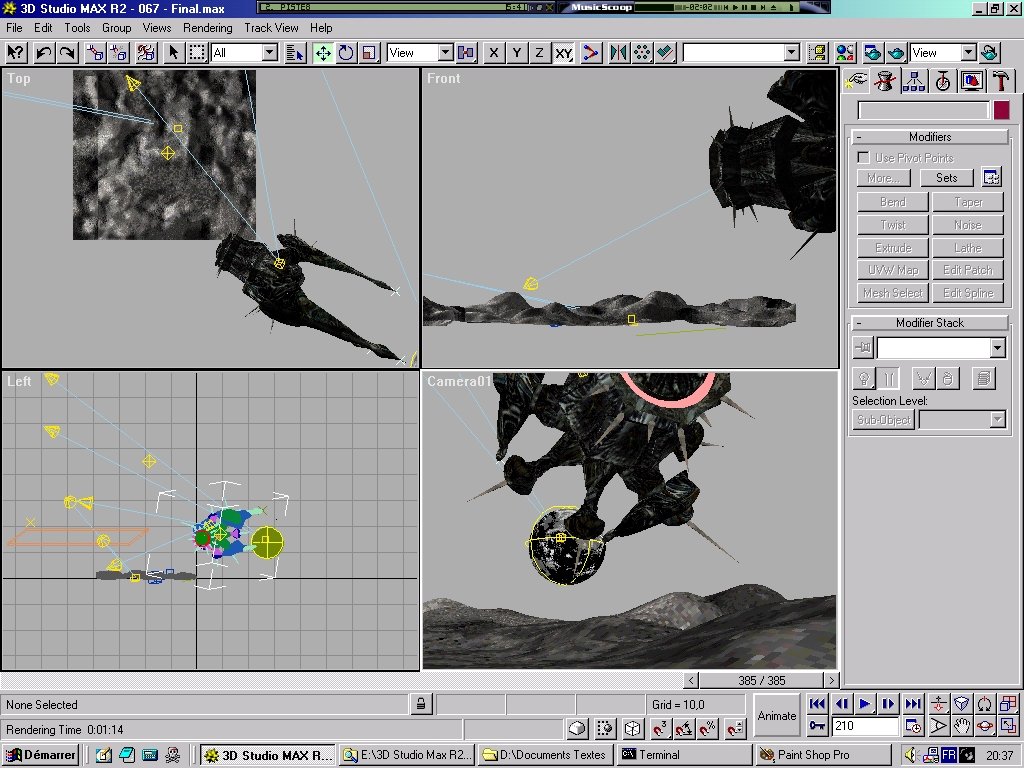 3DS Max introduced a brand new interface
3DS Max introduced a brand new interface
Serious work began in October 1998 and, as it was only a hobby during my college years, it took three years to reach completion.
Many ship designs are drawn from Wing Commander Prophecy, but the models themselves were not dumped from the game or downloaded from the Internet. I did all the modeling by myself.
The music is a mix of Alien vs Predator (the video game), Record of Lodoss War, and of course Wing Commander for the credits. As I began to become aware of licensing issues, my friend EGO (nowadays better known as Clint Slate) composed a track for me. But the video editing was done with the “orchestral” music in mind.
For the first time, my PC was powerful enough to activate the rendering of the ray-traced shadows. The resolution of the video has been bumped to 640x480 pixels and its frame rate to 15 FPS. The maximum conceivable for my Pentium MMX of 1998. In 2001, as my computer was then a 450MHz powerhouse, 30 FPS could have been possible. But consistencies forced me to keep 15 FPS. Rendering all the scenes again would have been too time consuming. Nonetheless, I took advantage of the computing power to increase the complexity of the scenes. The ending on the moon and the multiple mother-ships would not have been possible on the poor Pentium.
For the first time, all the frames were rendered as single images, assembled together and then edited with the sound in a non-linear video editor: Adobe Premiere. Gone were the days of writing a batch file to play the animated scenes along a soundtrack. The result was a modern AVI video file encoded with the really good Intel Indeo 5 codec.
Working on Windows NT was a joy. Unlike its sibling Windows 95, it was really stable. And unlike the prior version running under MS-DOS, it was possible to multitask and listen to mp3s while working. 😁
Production
- Machine:
- Pentium MMX 166 Mhz – 64 MB
- Pentium II 233 Mhz – 128 MB
- Pentium III 450 MHz – 256 MB
- OS:
- Windows NT 4
- Windows 2000
- Software:
- 3D Studio Max 1.5 – 2.0 – 2.5 – 3.0
- Paint Shop Pro
- Adobe Premiere 5
Gallery
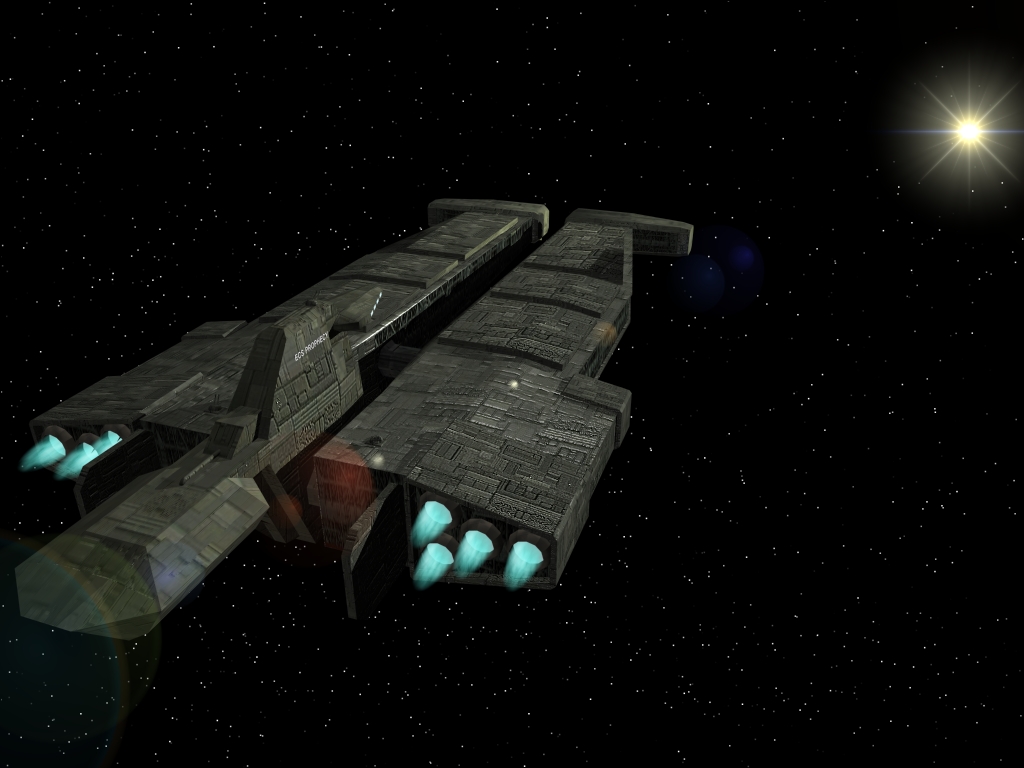 Rendering test of the Prophecy. This 1024x768 pixel image took around 45 minutes to compute on a Pentium 166MMX
Rendering test of the Prophecy. This 1024x768 pixel image took around 45 minutes to compute on a Pentium 166MMX
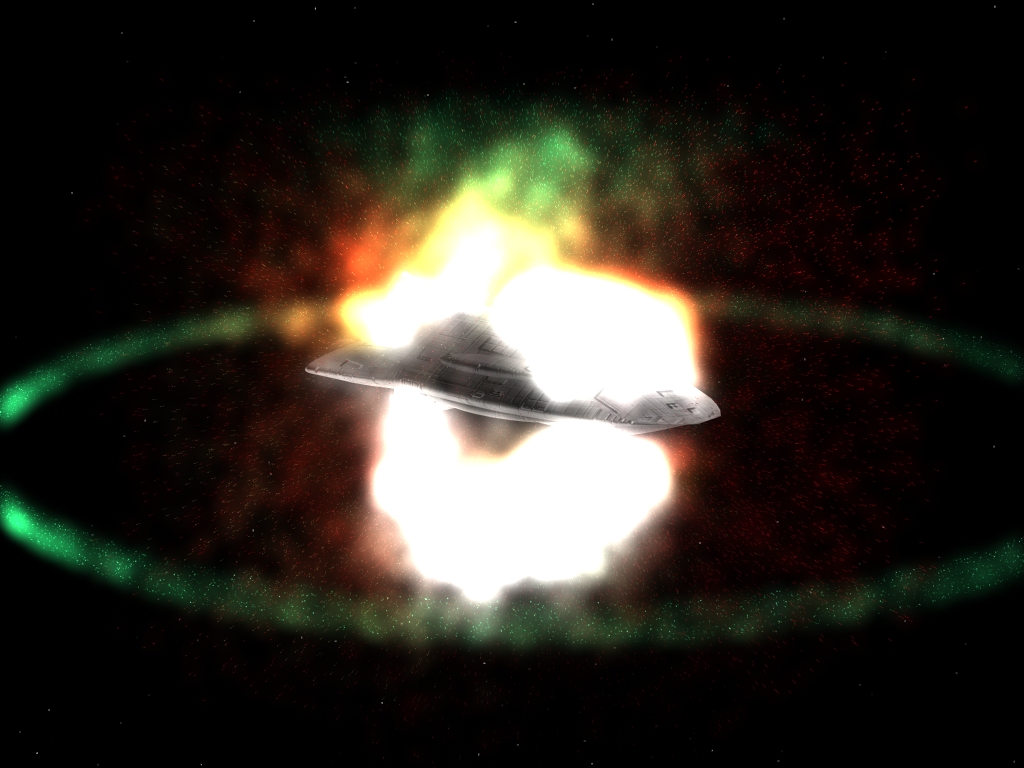 Test of an explosion. The “ring” was popularized by Star Wars Special Edition in 1997.
Test of an explosion. The “ring” was popularized by Star Wars Special Edition in 1997.
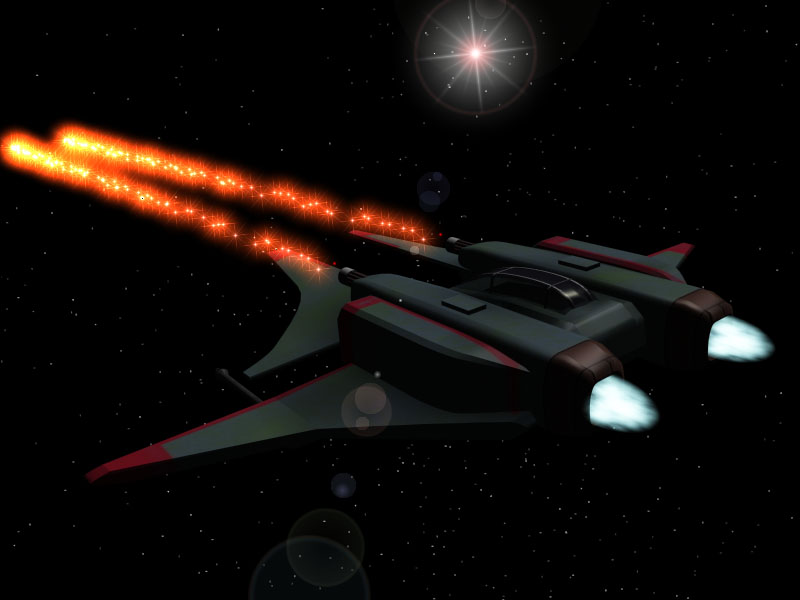 Test for a gatling-like gun on the bomber (not appearing in the final editing)
Test for a gatling-like gun on the bomber (not appearing in the final editing)
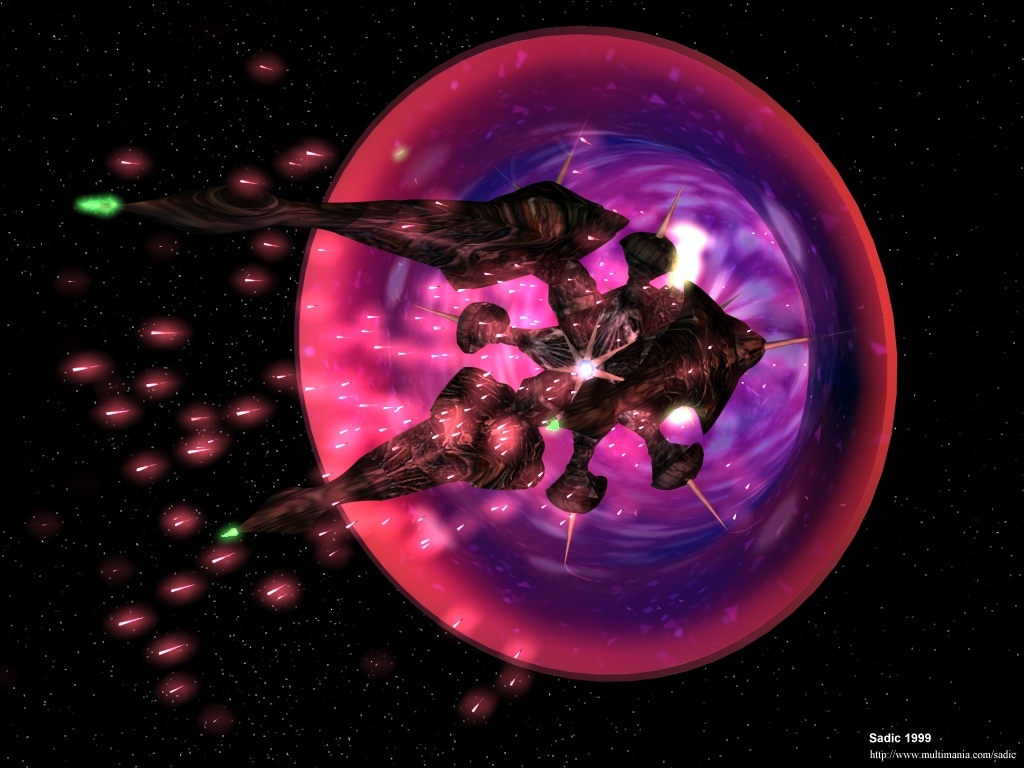 The first version of the vortex. I redid the effect one year later and obtained a way more convincing result
The first version of the vortex. I redid the effect one year later and obtained a way more convincing result
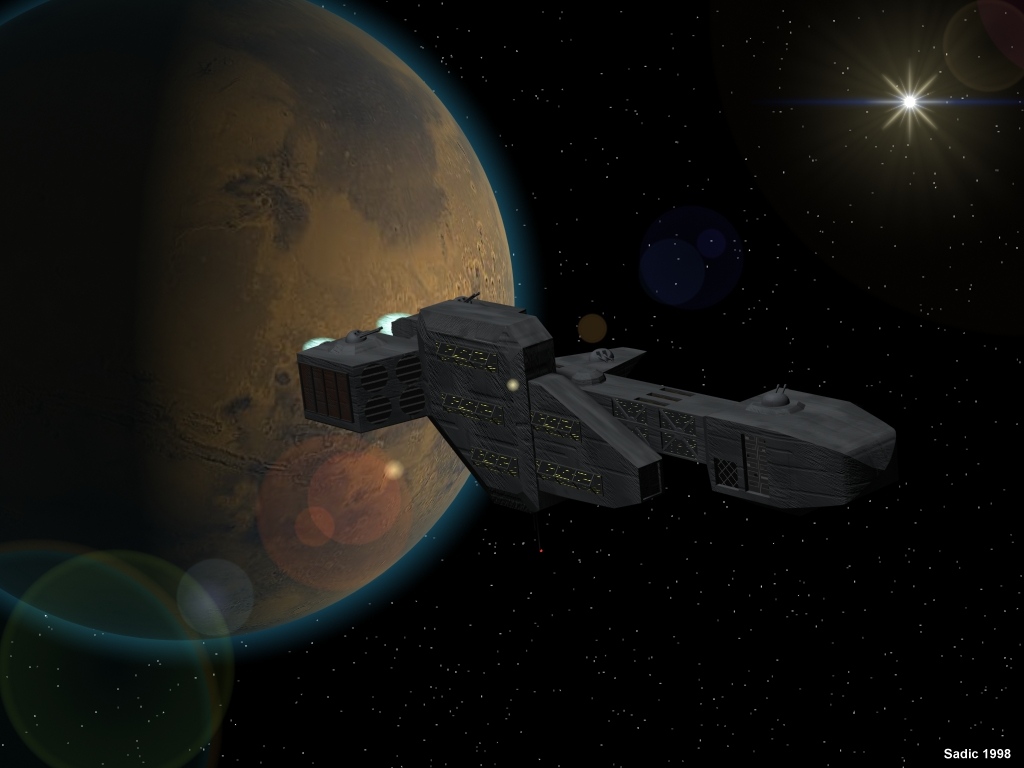 Test rendition of a spaceship (not of much use in the final video)
Test rendition of a spaceship (not of much use in the final video)
HellFire – 1996
Video
Context
For whatever reason I was grounded during the Easter holydays and the access to my PC was locked. No video games for me 😩. I dared to install 3D Studio 3 on my father’s computer and began to work on a Dassault Rafale, based on a small scale model I had since my childhood.
Once satisfied by the model, I began to imagine a short movie in which I could use it. As always it would involve some warfare. French Guyana would be under attack by a Mil Mi-24 and a Rafale would launch on alert to deal with the menace.
As the summer drew to an end, I lost interest and my animation would be let unfinished.
As new rendered scenes were appended to the movie, I always watched the result while listening to Smells like Teen Spirit by Nirvana. This is why this is the track used in the embedded video.
Compared to Submarine, the resolution has been bumped a bit so the video was now 480x360 pixels but still playing at 12 FPS. Ray-traced shadows were still too time consuming, thus not an option. The cockpit was small enough to be ray-traced.
The upped resolution required to render the scenes into FLC files, which is only a slight extension of the FLI format, bearing the very same limitations. The most restrictive aspect being to be limited to 256 unique colors for a whole scene.
An acute viewer would notice that I reused the barrels and trucks from Submarine and the Palm trees from Ariane. The Mi-24 and the Cobra helicopter models were downloaded from the Internet.
Production
- Machine:
- 486 DX2 50 MHz – 16 MB (modeling of the Rafale)
- Pentium 90 MHz – 32 MB
- OS:
- MS-DOS 6.22 (3D Studio and Vistapro)
- Windows 95 (textures)
- Software:
- 3D Studio R3
- Vistapro 3
- Paint Shop Pro
Submarine – 1995
Video
Context
If I were to produce something more ambitious than the Space Battle of 1994, I would need some help. So I initiated a “3D club” at my high school, which purpose was to teach people how to produce 3D images. The computers at school were a bit short on RAM, but it was enough for the teaching courses.
Most “students” quickly lost motivation, except for Irwin, who modeled the excellent “Excalibur” submarine, and Skaya who did the track. This time in MIDI instead of using a tracker as he did for Space Battle.
Of course, with everyone demotivated, the movie was left unfinished. The projected ending would have shown that the action took place in an aquarium. The music was also left in rough state, some kind of prototype of what Skaya envisioned.
At the time of modeling the submarine and the base, my machine was a Pentium 90 MHz: a beast for the time. Everything felt way faster, from the modeling that also beneficiated from a fast card on a PCI bus (an ATI Mach32) to the renderings. The floating point unit of a Pentium is indeed much stronger than the one of a 486.
Such computer power was required: although the animation is 360x240 pixels at 12 FPS, the pond with the ray-traced reflections was very slow to render. I could not afford to activate the rendering of the shadows though.
That time I bought a book to learn (and teach) about some more complex functionalities of 3D Studio that remained cryptic to me. “Le Grand Livre de 3D Studio 3” from Micro Application was very good and up to its task!
Gallery
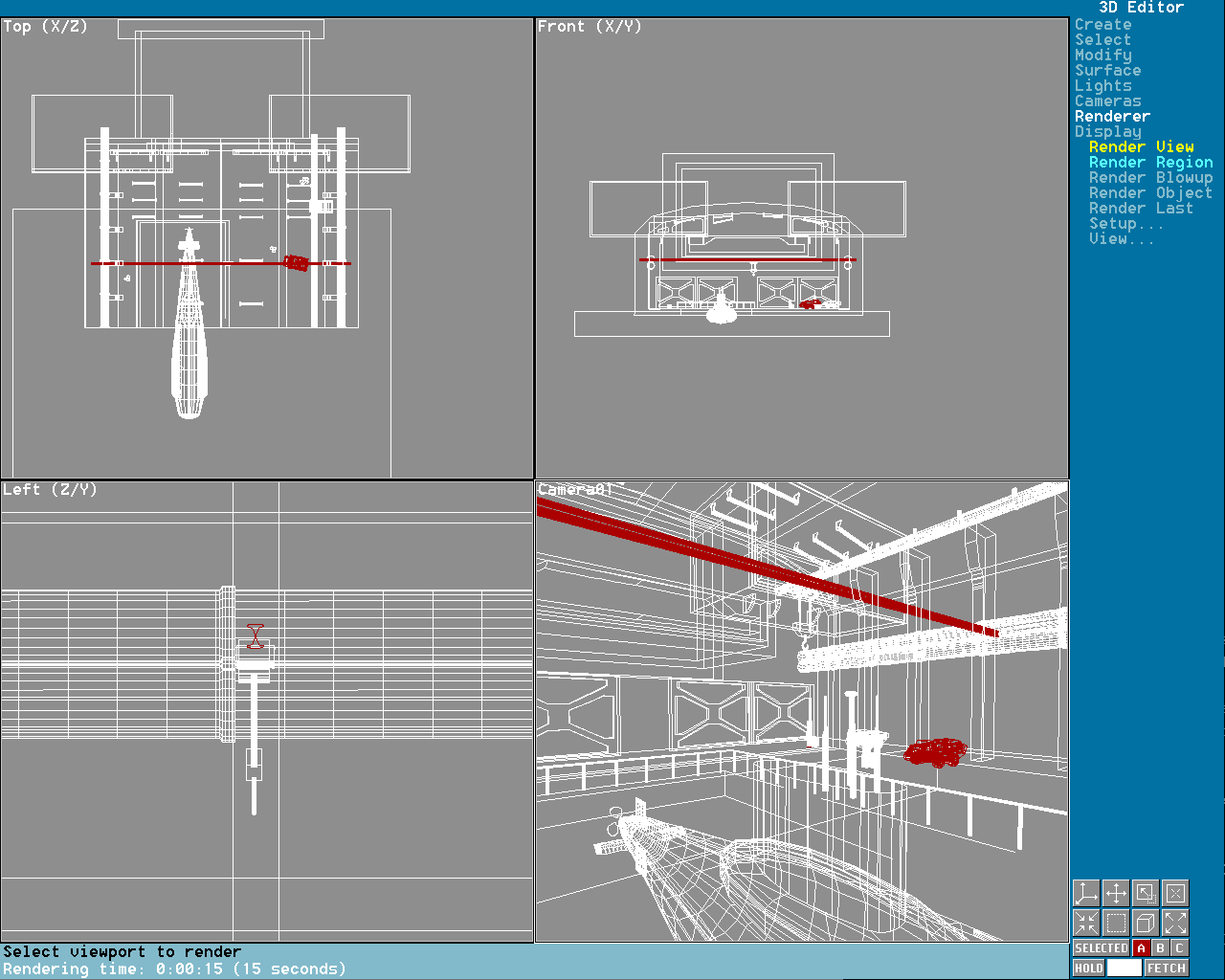 The objects were more complex than ever and required a Pentium to be swiftly displayed.
These views took 19 second to be redrawn on my 486DX2-66 with an ISA graphic card!
The objects were more complex than ever and required a Pentium to be swiftly displayed.
These views took 19 second to be redrawn on my 486DX2-66 with an ISA graphic card!
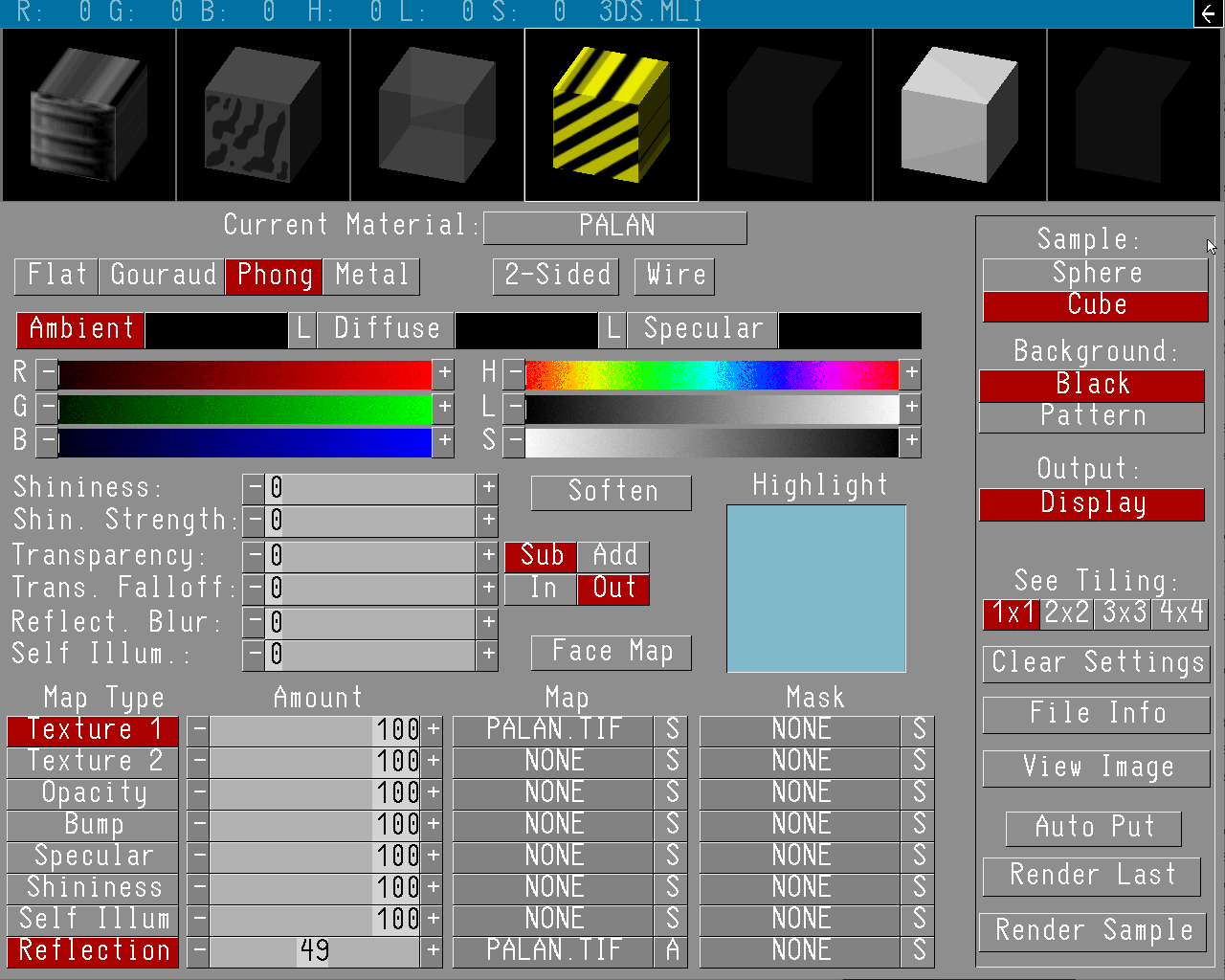 I took some time to learn how to use the “Material Editor” in order to get proper reflections
I took some time to learn how to use the “Material Editor” in order to get proper reflections
Production
- Machine:
- 486 DX2 66 MHz – 16 MB
- Pentium 90 MHz – 32 MB
- OS:
- MS-DOS 6.22
- Windows 3.1 (music and textures)
- Software:
- 3D Studio R3
- Vistapro 3
- Paint
Space Battle – 1994
Video
Context
After my initial tests with Ariane, I wanted to produce something way more ambitious: a Space Battle inspired by Star Wars! Retrospectively, it was a bit early as I did not know how to use 3D Studio beyond the most basic level. But hey, I was young and ambitious; and at least I found how to do boolean operations on the objects, and basic extrusions. That opened the door to slightly more complex models.
Also most of the textures were not scanned anymore as they are hand drawn with Paint. A powerful tool indeed… 😂
I used a terrain generator, Vistapro, for the ground level on the planets. As I found them gorgeous, I rendered them in high resolution: 640x480 pixels, whereas the other scenes were limited to a mere 320x240 pixels. But it was a mistake as my CRT had to sync when going from on resolution to another, introducing many disturbing black frames between the scenes.
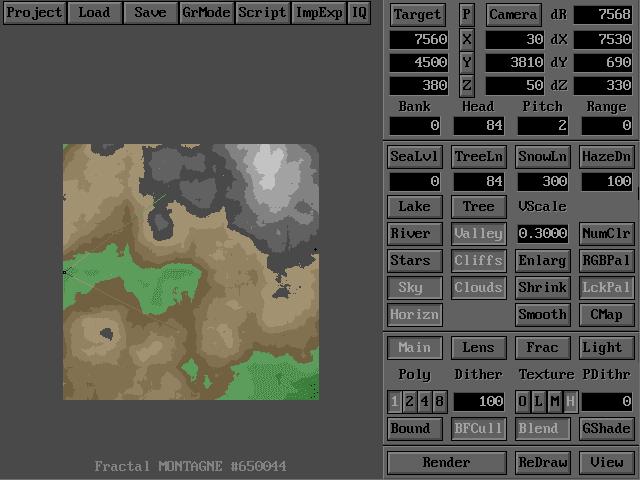 Vistapro was was a simple terrain generator but could lead to great results
Vistapro was was a simple terrain generator but could lead to great results
Furthermore, AAPLAY, the FLIC player provided with 3D Studio, could not play high resolution files, that were encoded in the more modern FLC format. This was the role of another executable, which could play low resolution FLI files but was unable to queue them to form a complete animation. I had to resort to writing a batch file to mix FLI, FLC… and play the soundtrack!
Indeed, my friend Skaya composed a tune on a Windows tracker. All I had to do was to launch a TSR mod player, then launch the animated sequences.
Gallery
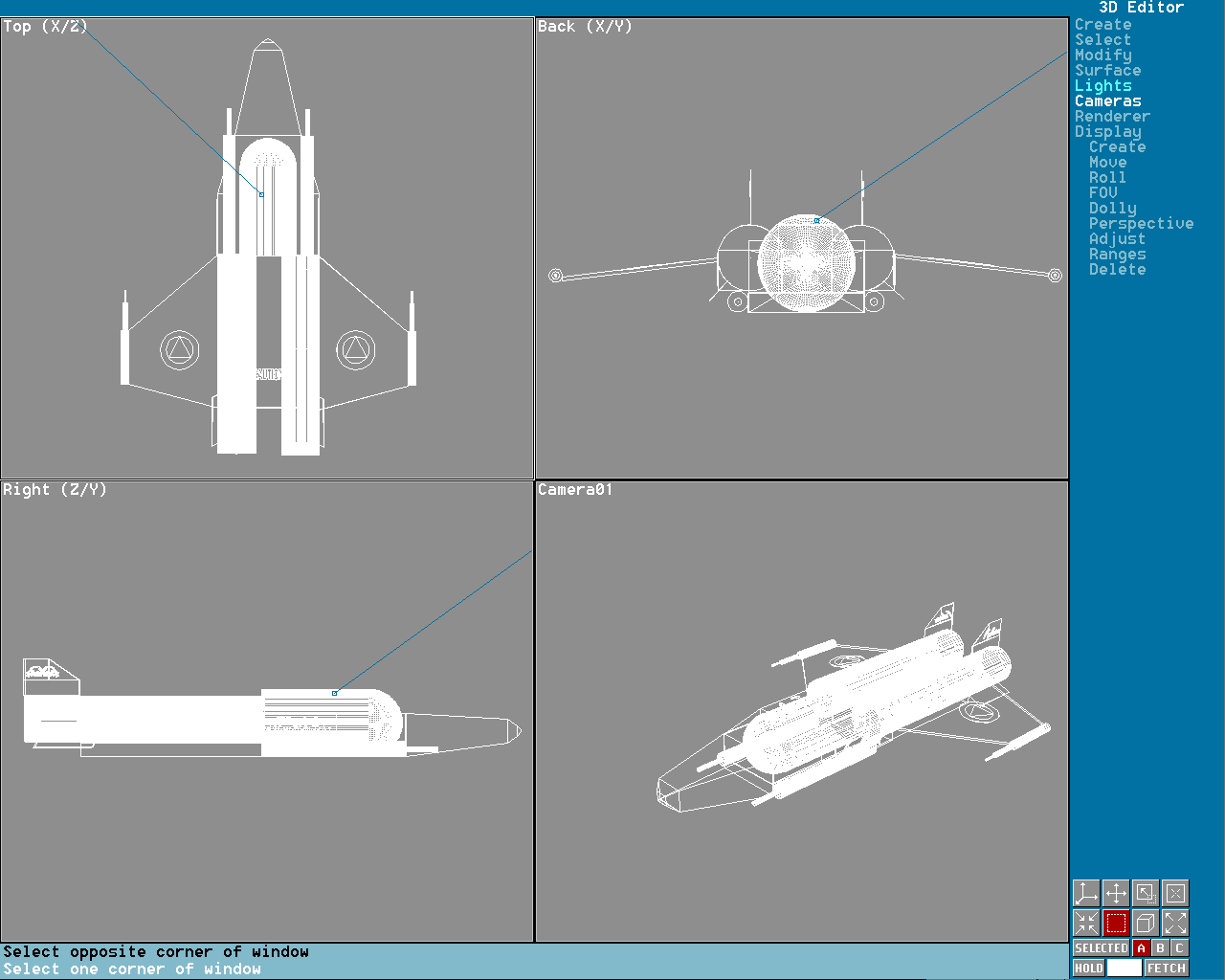 The main spaceship was still mostly modeled using primitives
The main spaceship was still mostly modeled using primitives
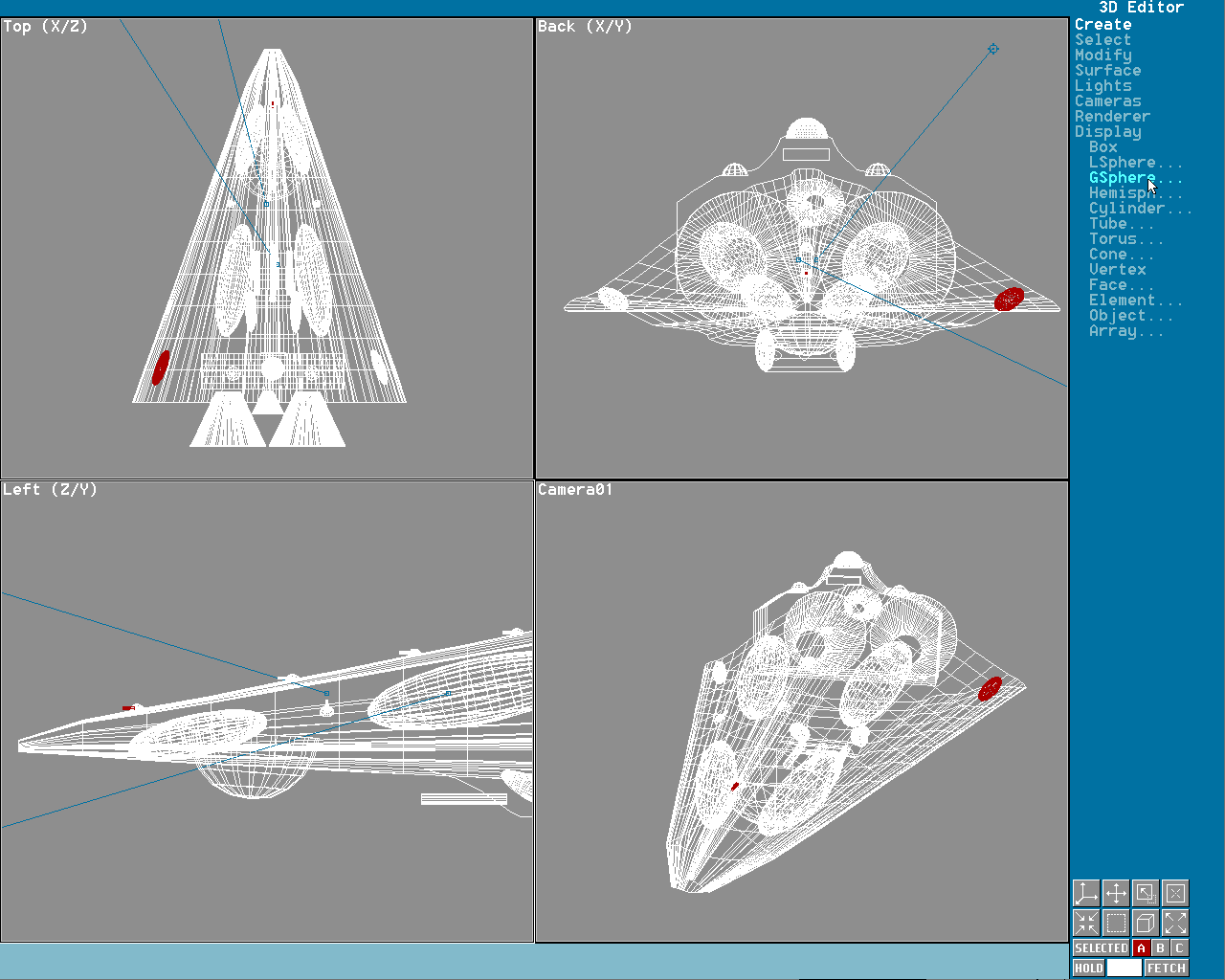 Very soon afterwards, I would discover about Boolean operations and extrusions
Very soon afterwards, I would discover about Boolean operations and extrusions
Production
- Machine:
- 486 DX2 66 MHz – 16 MB
- OS:
- MS-DOS 6.22
- Software:
- 3D Studio R2
- Vistapro 3
- Paint
Ariane – 1993
Video
Context
After years of longing for a copy of 3D Studio, by far the best 3D suite that existed on PC at that time, I found a guy in my high-school that pretended to have access to any computer software imaginable. I did not believe this was possible.
“Oh really? I bet you don’t have 3D Studio” I said.
“Never heard about that 3D thing, but I will check.”
The following day, he asked me to bring 36 floppies 😲.
Yeah, I admit. This copy was not legit. But the program was way out of my budget at the time.
3D Studio was a very complex software for a teen like me, who had a very limited experience in 3D, no Internet… and of course no manual 😅. Think about jumping straight from Paint to Photoshop.
But I was not afraid, and what better way to learn than to produce a small animation right away?
So I decided to depict Ariane 5, which had not experienced its (catastrophic) maiden flight yet. Its forms were simple enough and the trajectories could be left simplistic. For I had to learn everything: how to model, the concept of key-frames, how to map textures…
Concerning the modeling phase, I was very naïve and thought I had to manually place and link every vertex, just like I did with my previous and very crude modeling software.😅 The palm trees are more complex objects, but they were provided as samples.
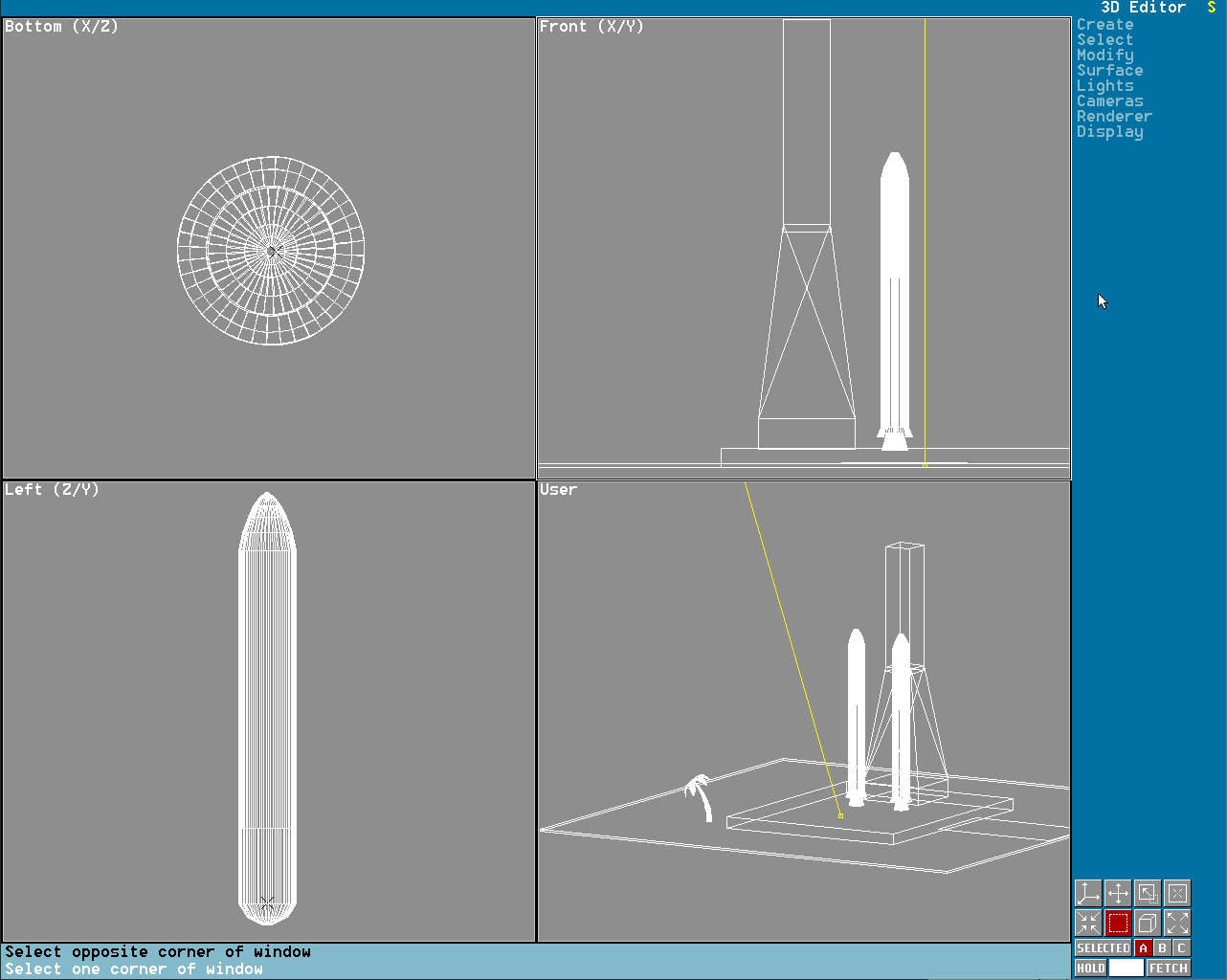 The meshes were modeled using primitives and modified by moving the vertex by hand or by scaling a group of vertex!
The meshes were modeled using primitives and modified by moving the vertex by hand or by scaling a group of vertex!
For the textures, I used a scanner to digitize photos that I found in magazines. That is why some of them may appear a bit grainy: it is the paper grain! I drew the flags with colored felts on a white sheet of paper then scanned them! 😂 Admire my bad take on the German flag 😳.
At that time, there was no standard way to encode “movies” on a PC. QuickTime and Video for Windows were in their infancy and were unable to play anything more than a thumbnail using a crappy codec. The animated scenes were thus exported to an Autodesk file format: FLIC (.fli)
These files contain key-frames and delta-frames. A key-frame is an indexed 256-color image that is compressed using RLE. Delta-frames encode only the difference with the previous key-frame. It is very close to what an animated GIF is. The animations were not too big, easily playable on the machines of the time and did not display compression artifacts. But they were limited to a single 256-color palette for the whole sequence! A small description text file could indicate to the player how to chain the .fli files in order to play the whole animation.
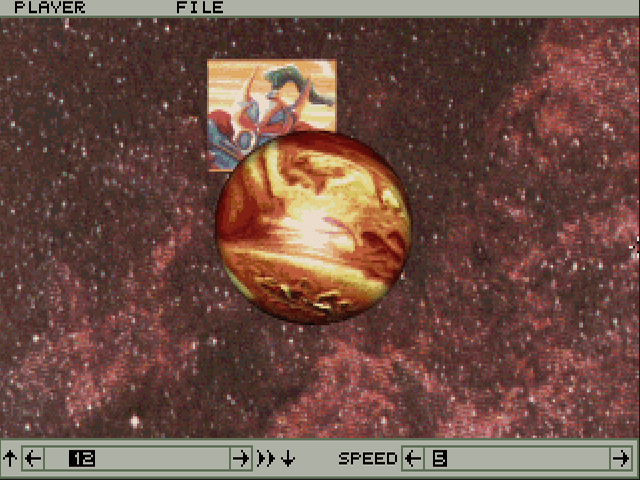 3DS came with a very simplistic program to review the FLI files
3DS came with a very simplistic program to review the FLI files
Production
- Machine:
- 486 DX2 66 MHz – 16MB
- OS:
- MS-DOS 6.22
- Software:
- 3D Studio 2
Bonus
The Space Dude – 2002-2003
Video
Context
My very last attempts at producing a 3D-short. The story was about a junky alien that was about to crash on Earth. Unfortunately, 3D stuff was too time consuming for the young adult I had become. Plus, 3DS Max and Maya were becoming mainstream and people a lot more talented than me began creating incredible art. It was time for me to find another hobby (disclaimer: https://www.xtof.photo)
In order to gain some time, I reused many models from Space Battle and downloaded many more. For instance, the X-Wing and all the spaceships in the background. My very last model would be the stargate, of which I was very proud. I was indeed more faithful than what I saw on the Net at the time.
Although more recent than Space Battle, I did not put this one top of this page as it is incomplete and, after all, I am celebrating the 20th anniversary of Space Battle.
Production
- Machine:
- Athlon MP 2100+ – 1 GB
- OS:
- Windows XP
- Windows 2000
- Software:
- 3D Studio Max 5
- Photoshop
- Adobe Premiere 6
Wing Commander
Various pictures of Kilrathi spaceships from Wing Commander. One of my favorite computer game ever! I did these images a few weeks after completing Space Battle.
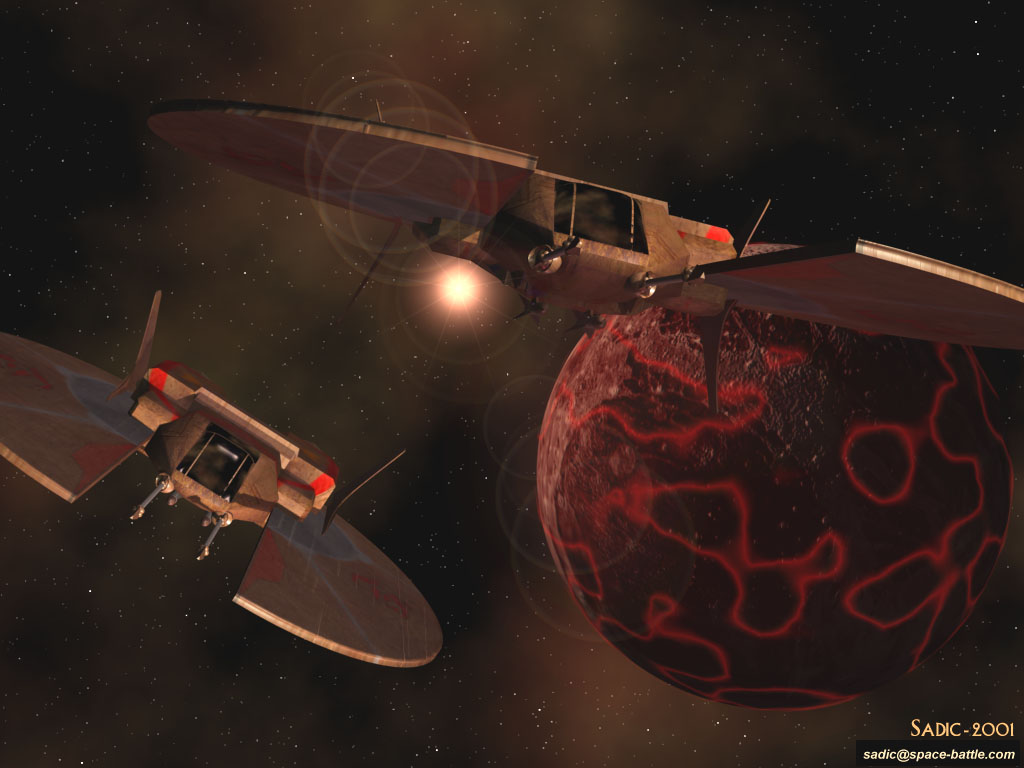 Two Dralthis
Two Dralthis
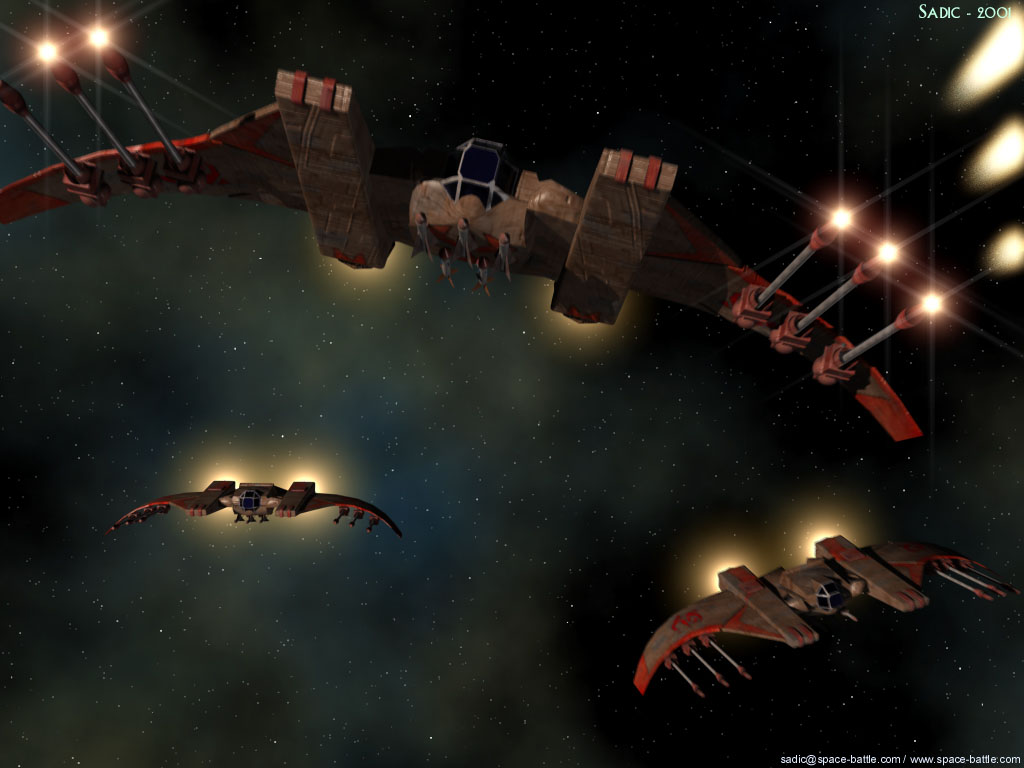 Attack of the Jalthis
Attack of the Jalthis
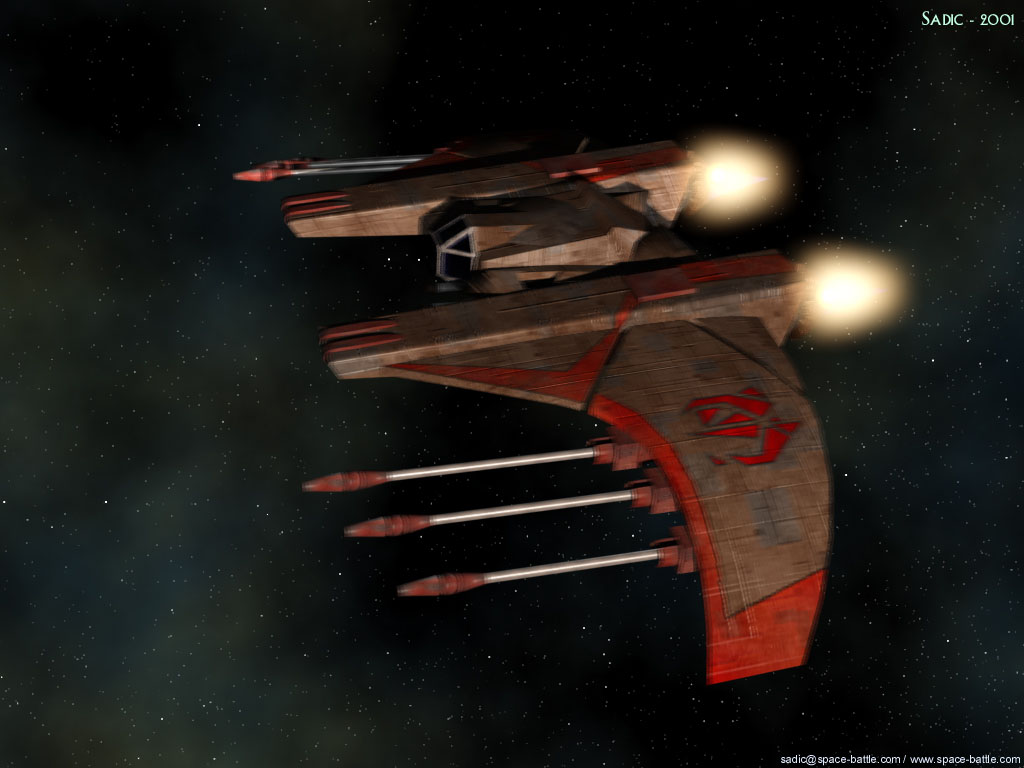 Jalthi
Jalthi
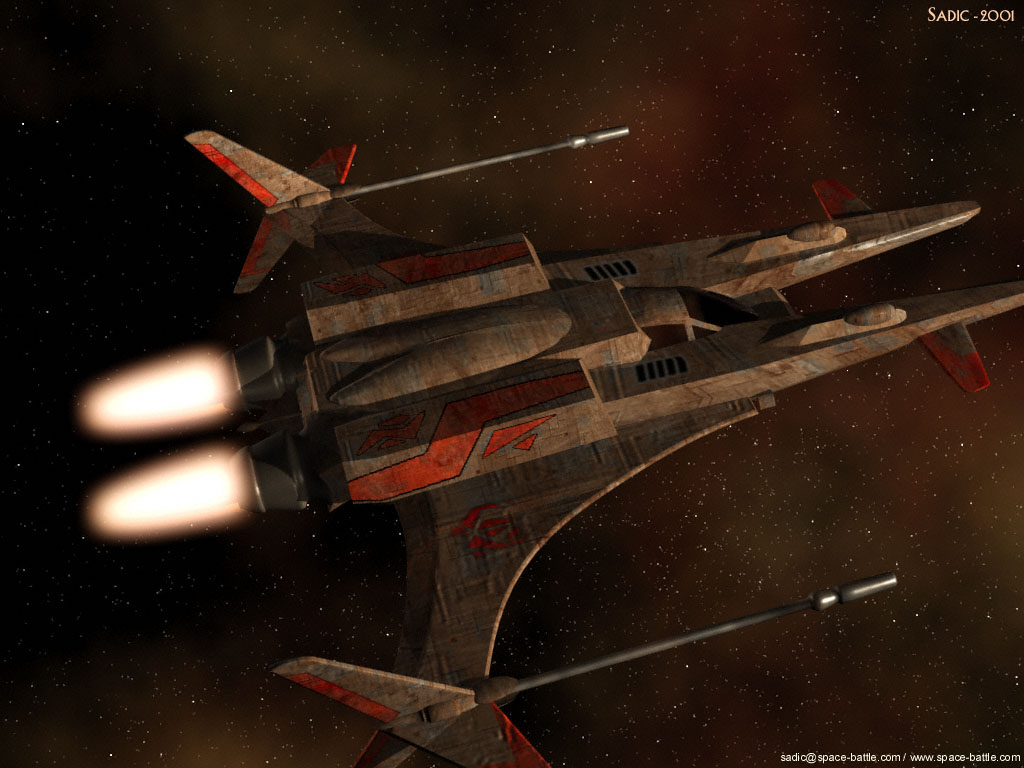 A Kranth
A Kranth
Early attempts
In middle school, I craved to get my hands on a copy of 3D Studio. But it was a rare item. So I bought a very simple and cheap (around FF50) modeler and ray-tracer from the French publisher Micro Applications, called Raytrace, and I took my first steps into 3D.
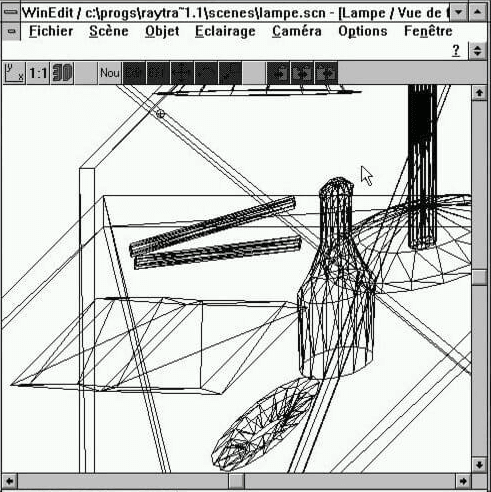 The very simple modeler of Raytrace
The very simple modeler of Raytrace
The modeler was very simple indeed. It provided the standard Top/Side/Front views and basic shapes. If I wanted something more complex, I had to move the vertex manually or create new ones and connect them together to form triangles and new shapes 😨. And the rendering times were awful.
But I was so thrilled when I could admire my very first 3D images!
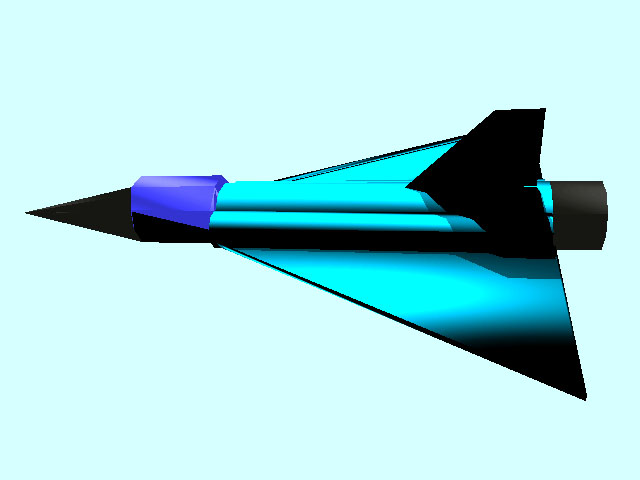 My first rendering ever: a Dassault Mirage 2000!
My first rendering ever: a Dassault Mirage 2000!
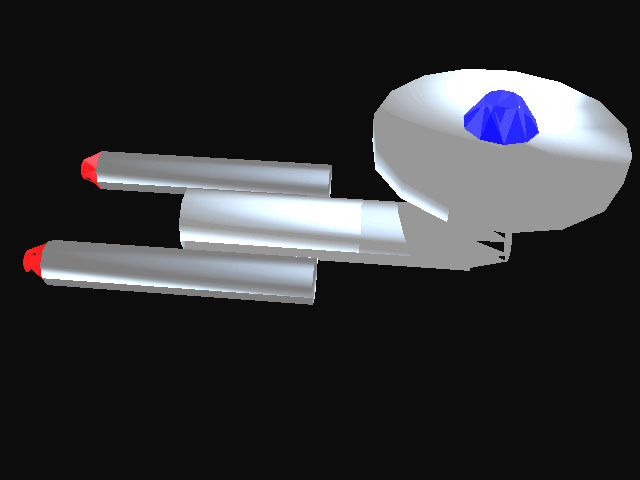 The Enterprise
The Enterprise
